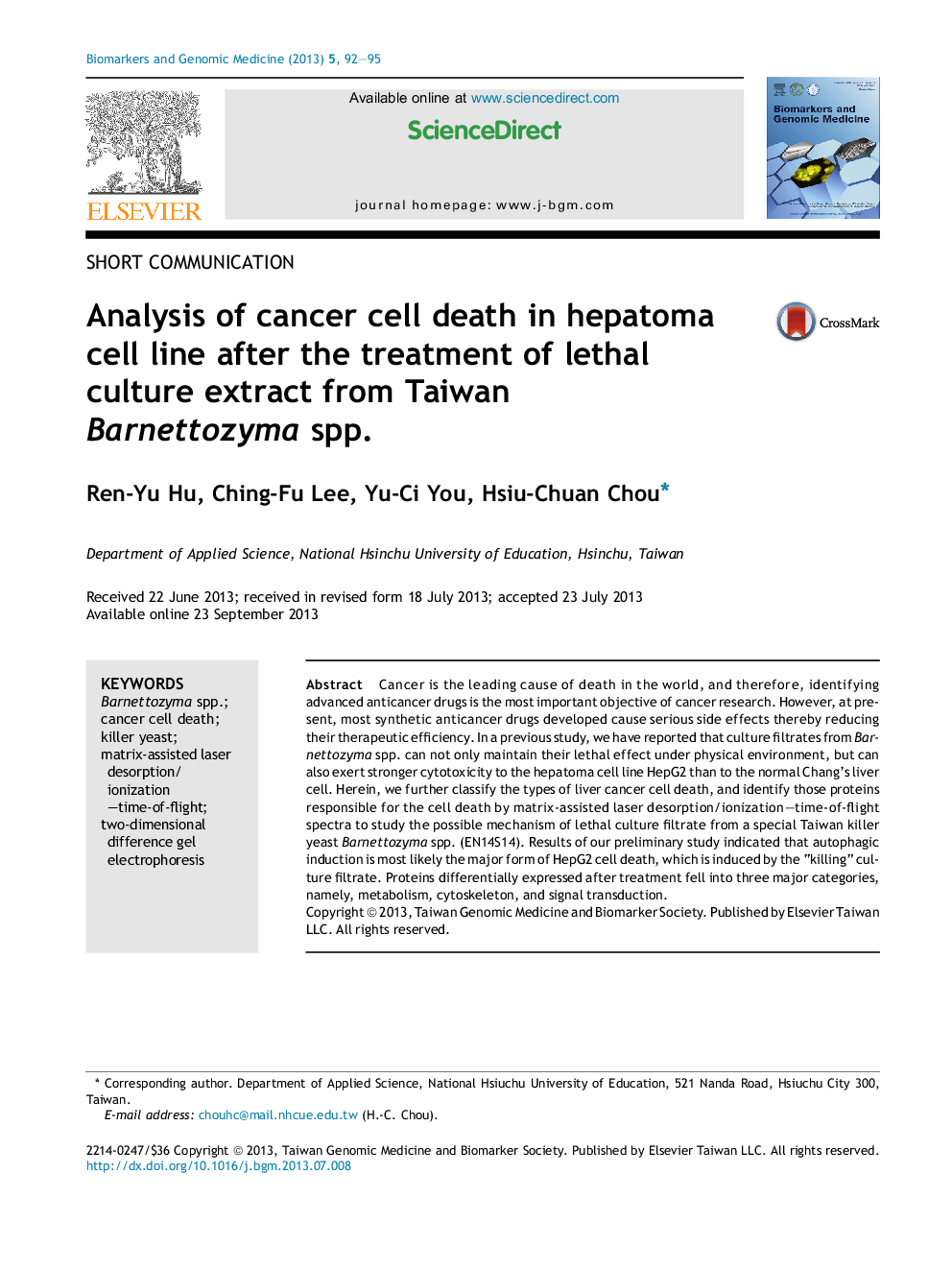| Article ID | Journal | Published Year | Pages | File Type |
|---|---|---|---|---|
| 3459355 | Biomarkers and Genomic Medicine | 2013 | 4 Pages |
Cancer is the leading cause of death in the world, and therefore, identifying advanced anticancer drugs is the most important objective of cancer research. However, at present, most synthetic anticancer drugs developed cause serious side effects thereby reducing their therapeutic efficiency. In a previous study, we have reported that culture filtrates from Barnettozyma spp. can not only maintain their lethal effect under physical environment, but can also exert stronger cytotoxicity to the hepatoma cell line HepG2 than to the normal Chang's liver cell. Herein, we further classify the types of liver cancer cell death, and identify those proteins responsible for the cell death by matrix-assisted laser desorption/ionization–time-of-flight spectra to study the possible mechanism of lethal culture filtrate from a special Taiwan killer yeast Barnettozyma spp. (EN14S14). Results of our preliminary study indicated that autophagic induction is most likely the major form of HepG2 cell death, which is induced by the “killing” culture filtrate. Proteins differentially expressed after treatment fell into three major categories, namely, metabolism, cytoskeleton, and signal transduction.
